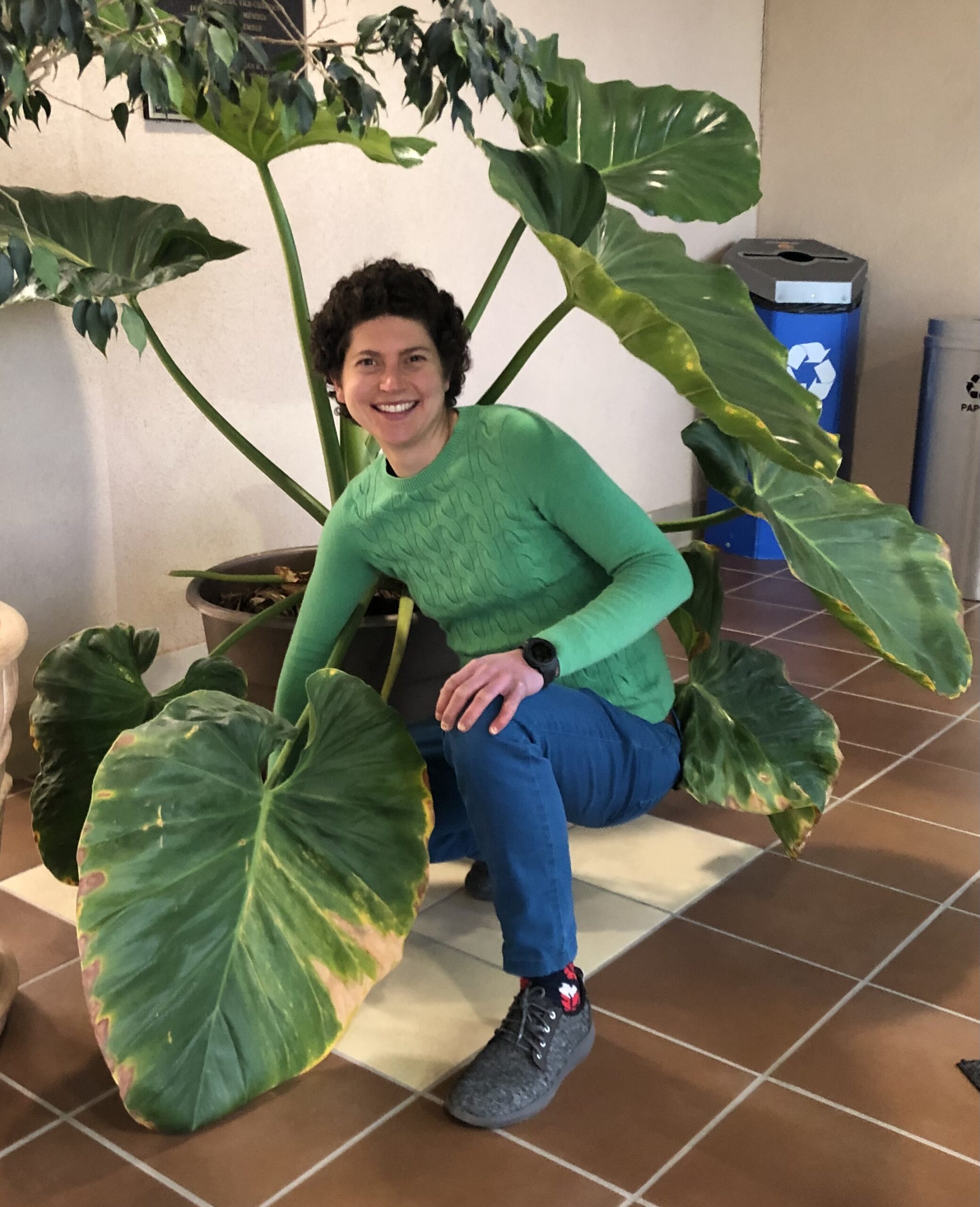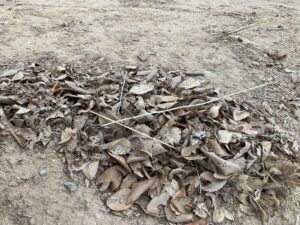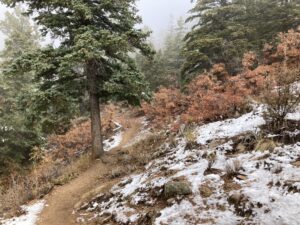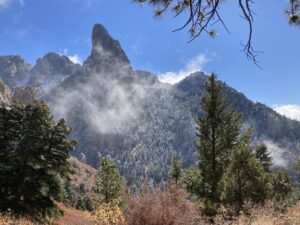Down and Dirty with Rachel


Animal pulling reeds
The grass was alive. Okay, maybe that’s obvious, but I mean “alive”, like “Frankenstein alive”. I heard a rustle along the ditch bank and saw some dried, short reeds and a few sprigs of grass moving back and forth, sticking out of a layer of leaves. I bent closer to see what animal was moving amongst them and realized there was no animal amongst the reeds. One or two reeds at a time, an inch at a time, were being pulled into the earth. The animal was below the reeds, not amongst them. By morning, the clump of reeds and grass had been reduced to a few stragglers.
As part of a program with the Ciudad Soil and Water Conservation District—RiverXchange—the Extension office goes into elementary schools to teach fifth graders about irrigation methods. When we ask them who is responsible for getting them their food, they often say “my mom”, “the cafeteria ladies”, and “the store” before hitting on the answer we are looking for: farmers and ranchers. But even that answer is too superficial and simplistic. Microbes, mycorrhiza, worms, ants, insects of all kinds, trees, and that animal dragging the grass into its burrow are responsible for our food production. Animals, plants, fungi, and bacteria work together with the soil, minerals, water, and sun to get us our food. They all influence the water cycle, weather, availability of nutrients, and control or outbreak of pests and diseases that kill or weaken our crops and animals or allow them to flourish.
Humans have been part of this interplay as long as we have been around as a species. Pre-agriculture, we probably influenced the aforementioned cycles to a similar degree as other animals. In the past 10,000 years, however, we have exponentially increased our influence. Initially, this was by selective breeding and diverting water. More recently, by applying inorganic fertilizers and poisons to the soil and pumping carbon dioxide into the atmosphere, among other means. On some lands, this has resulted in a pernicious cycle where we rely ever more on farmers, ranchers, and industry to get us our food because the lands would be infertile without our interventions.

La Luz – Harmony
When I hiked the La Luz trail in the Sandia Mountains in November, I was reminded of a different reality. There were no monocrops. A large diversity of plants and animals (and, I am sure, microscopic organisms) intermingled with each other, allowing for a healthy ecosystem where no herbicides, pesticides, or supplemental water were needed. Everything fit and contributed to a greater beauty. Even though many annuals had died and perennials gone dormant, the mountainside breathed of life. Even the rocks and clouds had energy and felt alive.

A Breath of Life – La Luz Trail, Sandia Wilderness, NM
Of course, we can knock this balance out of whack by introducing an invasive species or cutting down trees. But I hope instead of us trying to impose “order” and our will on the natural world, we will learn something from its beautiful orderly chaos. If you are tired of weeds in your yard, remember that a weed is “a plant that is not valued where it is growing” (Webster’s Ninth New Collegiate Dictionary, 1988) and, thus, is in the eye of the beholder. Value the diverse species mix you can get in an untended yard. Value the food it gives to above- and below-ground species. Value the insects flitting between your clover and dandelion flowers. Value the water that gives life to all living things and fill your yard with plants that need little, if any, supplemental water. Value the fungi, bacteria, plants, and animals that are around, above, and below us. Value our farmers and ranchers, too. But remember if we don’t value the Earth and the life on it, our farmers and ranchers won’t be able to get us our food, no matter how hard they try.
A group of people are in a room. Everyone is wearing either an orange or an indigo birthday hat. Each person can see the other people’s hats but not their own. One of them shouts, “If you can see at least 6 orange hats and at least 6 indigo hats, raise your glass!” Exactly 12 people raise their glasses. How many people are in the room? (From Cuemath via The Guardian)
Last month’s answer:
For an explanation of the solution, see https://www.theguardian.com/science/2022/aug/22/did-you-solve-it-could-it-be-logic. It’s the third puzzler.
A Fond Farewell to Rachel
As many of you know, our Extension Agent, Rachel Zweig, has been accepted into the PeaceCorps (Guatemala). Our loss is Guatemala’s gain. Rachel helped us ‘emerge’ from COVID as a stronger and wiser community of gardeners. Her irrigation classes alone reached (and helped) hundreds in our community. Her sense of humor (and her newsletter puzzlers) will be greatly missed. SEMG is deeply grateful for the time she’s been with us. SEMG gave her a National Geographic Adventure Map of Guatemala along with a brass compass to help her find her way along her journeys.
We wish you the best, Rachel, and we look forward to following your adventures in the PeaceCorps! We will miss your blog!
